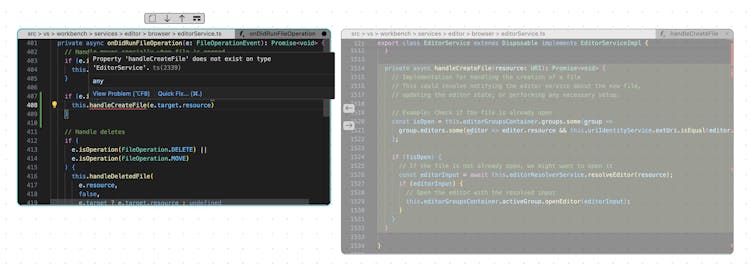Haystack Editor puts your code on a giant whiteboard IDE concept instead of file tabs. Made by a Y Combinator S24 company that got tired of hunting through file trees to understand how shit connects. The infinite canvas approach is becoming popular for code exploration tools.
I tried it on a React project for a week. The canvas idea is actually pretty clever - when you click on a function, it draws lines to everything that calls it. No more guessing which component uses what. This kind of code visualization helps with navigating large codebases - a common pain point for developers.

How It Actually Works
Instead of file tabs, everything lives on one big scrollable canvas. Files show up as boxes you can drag around. When you open a function, it draws lines to show what calls it and what it calls. Kind of like debugging with console.log everywhere, except visual.
![]()
The canvas saves your layout, so when you come back tomorrow your organized chaos is still there. Handy for those "what the fuck was I working on?" moments. This visual approach is similar to React Flow but specifically designed for understanding existing code rather than building new diagrams.
The Reality Check
Has 1.2k+ stars on GitHub which is solid growth for a new editor. Still in active development - they just dropped a major release on September 10th, and push updates weekly like clockwork. This aligns with modern JavaScript IDE development practices for maintaining user engagement.
Memory usage is higher than VS Code but not IntelliJ-level ridiculous. Takes about 5-10 seconds to load a medium-sized project, which feels like an eternity when you just want to fix one damn line. The canvas gets laggy with huge codebases, but they're working on it. This is a common challenge with Electron-based editors - they trade performance for cross-platform compatibility.
When It's Actually Useful
Works best when you're trying to understand someone else's code or planning new features. The visual connections helped me figure out a gnarly Redux flow that would've taken hours with normal file jumping. Perfect for situations where traditional code analysis tools fall short.
![]()
Not great for day-to-day coding yet - still missing a lot of IDE features. But for exploring and understanding code architecture? Actually pretty useful. This fills a gap in the React development toolchain where most editors focus on writing code, not understanding it.
Supports TypeScript, JavaScript, Python, Rust, and the usual web stuff. Built with Electron so it runs everywhere but uses more RAM than native editors. For serious TypeScript development, you might still prefer specialized IDEs.

